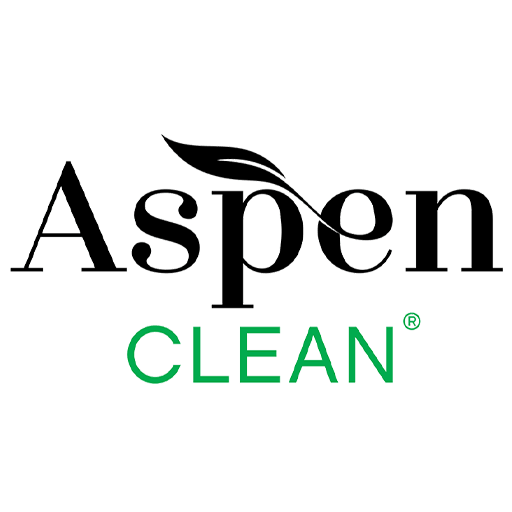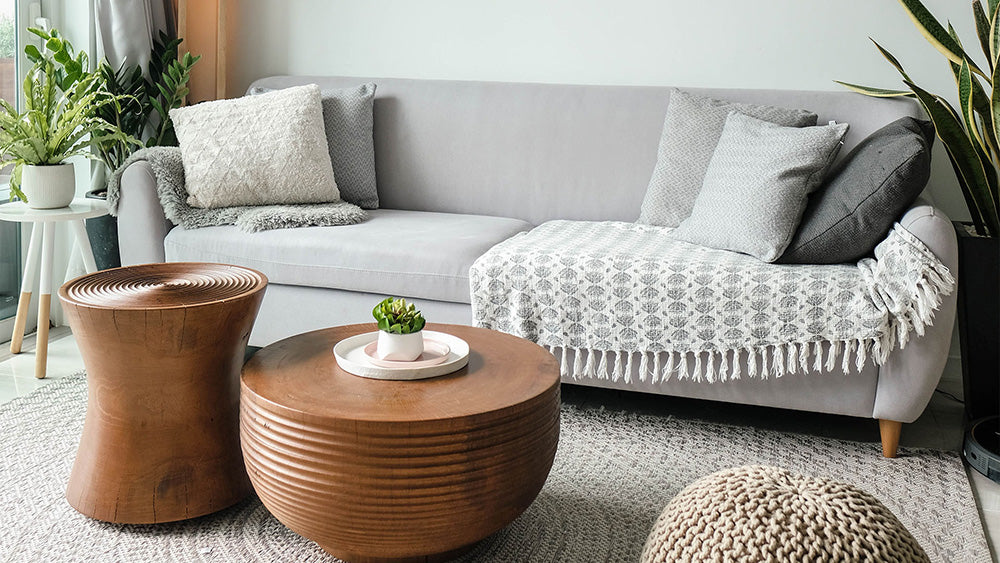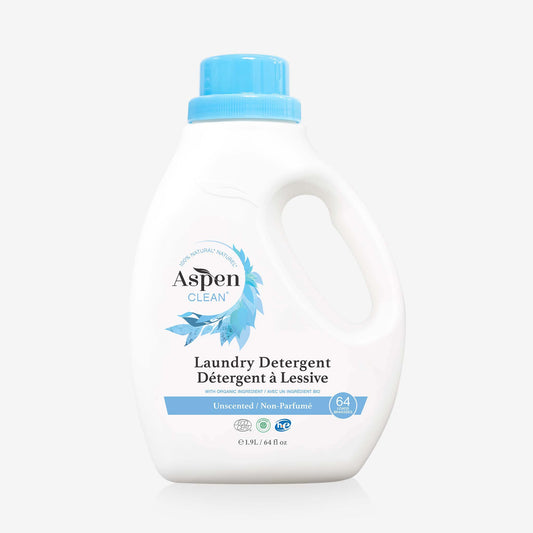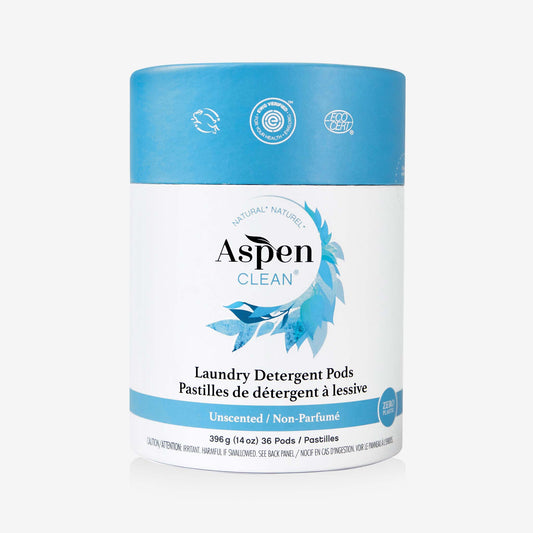Whether you enjoy cleaning your home or it’s a chore you dread, cleaning and sanitizing are more important than ever. Cleaning plays a key role in keeping you and your family healthy and extending the life of your home. To do this, you probably have a collection of the best-specialized cleaning products for removing dirt, germs, and grease. The problem is those very products that make your home look so good might be doing more harm than you realize. This is because many cleaning products contain toxic chemicals which are harmful to health and indoor air quality. By using more natural cleaning supplies you can improve indoor air quality and protect the environment.
The reason why many of the ingredients in cleaning products are dangerous is that they include irritants that can cause problems with your skin, eyes, and throat. You might suffer headaches and sinus problems from cleaning products and in some cases, it can be even worse. For example, mixing chlorine bleach with acid creates a dangerous gas that can be lethal.
Harmful Effects Of Cleaning Products On Indoor Air Quality and Health
Your home might look spotless and feel fantastic, but it’s possible that your cleaning products are contaminating the air and possibly harming your health. Indoor air quality is something that can get overlooked, especially in the home, but it’s important and critical to your health. Your home’s air quality can affect everyone, although children tend to be most susceptible.
Volatile organic compounds (VOCs) are chemicals that are often used in cleaning supplies, paints, pesticides, craft supplies, building materials, and furnishings. They’re very common and they can also be very harmful when it comes to air quality. VOCs are released into the air when you’re cleaning but they’re also released even when they’re sitting in storage.
VOCs tend to be concentrated indoors and have been linked to respiratory problems, headaches, dry eyes, nasal congestion, nausea, and fatigue. Higher concentrations can even be carcinogenic. Some VOCs occur naturally, but others are released from the same products you use to clean your home.
VOCs aren’t the only culprits when it comes to air pollution inside the home. Other common pollutants include:
- Cigarette smoke
- Disinfecting products
- Pesticides
- Burning fuel in gas stoves and fireplaces
- Pet dander
- Mold
- Asbestos
- Lead
- Radon
The dangers are everywhere, and cleaning is an essential part of removing some of these pollutants, so how do you select the right cleaning products?

What Cleaning Products Are Dangerous?
It’s all about the ingredients, but in general, you’ll find that VOCs are typically found in the following products:
- Any aerosol spray
- Air fresheners
- Chlorine bleach (we recommend oxygen bleach powder instead)
- Dish detergent
- Rug and upholstery cleaners
- Furniture and floor polish
- Oven cleaners
A good rule is to look at the labels to see if they are marked low or no VOC. Also, stay away from fragrances, flammable ingredients, and irritants.
Leaning toward green or natural products is not a bad idea because many of them skip the flammable ingredients and fragrances, but this shouldn’t be your only criteria because these products can still contain harmful chemicals. Check the product’s website to see what certifications they have and to make sure they’re keeping up with quality standards set in their industry. AspenClean diligently works to stay certified and prove we are dedicated to giving you safe options (learn more about our certifications here).
Chemical Free Cleaning Products For Indoor Air Quality
Being careful about the products you use is one step toward ensuring the air in your home is healthy but there are some other steps you can take.
- Be stingy with cleaning products rather than overdoing it
- Never mix cleaning products, especially if one of them has chlorine bleach
- Read the labels and follow instructions
- Open windows and use fans to improve ventilation
- Rinse surfaces after cleaning
- Throw away old, partially used cleaning products
- Avoid or limit products with pine or citrus oil
You can take your cleaning a step further by making your own solutions. That doesn’t mean anything you can make is going to be safe, there are still some dangerous ingredients that are commonly kept in the home. As we know, chlorine bleach can be great at cleaning but it’s also highly toxic and when mixed with any acid it becomes even more dangerous. So, what products can you make at home? The following homemade cleaning solution recipes are safe and effective.

Making Your Own Safe Cleaning Products
People have been making their own cleaning products for generations and some simple ingredients can give you remarkable results without negatively impacting the air in your home.
DIY Heavy Duty Scrub
This is a great recipe for cleaning the bathroom and other germy and grimy areas.
- ½ Cup baking soda
- ¼ Cup white vinegar
It’s the fizzy action that does a lot of the heavy lifting, make sure that happens on the surface you’re cleaning by pouring the ingredients directly on the spot (great in the tub, sink, or toilet).
DIY Counter Cleaner
This recipe comes with a bunch of variations, mainly because many countertops are made of luxe materials and using vinegar (or any acidic product) is bad for them.
For surfaces that aren’t susceptible to acids, mix equal parts water and vinegar and spritz it on.
For more sensitive surfaces or just because you don’t want to use vinegar, use equal parts rubbing alcohol or vodka with the water and spritz away.
Clean and Sanitize Wood and Plastic
It just doesn’t get easier than this one. If you want to clean and sanitize anything that’s made of wood or plastic, and you want to do it in a totally non-toxic way, use a lemon. Cut a lemon in half and rub it on the surface and then let it air dry. Finally, rinse with water.
Floors, Bathrooms & More
This is a great universal cleaning solution that you can mix up in a spray bottle and use regularly – except on granite and marble, etc. because it does contain acidic ingredients.
- ¾ Cup vinegar
- ¼ Cup lemon juice
- A few drops of dish soap
This solution can be made in large amounts for a huge spring-cleaning day or make enough for a spray bottle and use a spritz whenever you need it.
Remember AspenClean
If you don’t want to go through the fuss of making your own cleaners, you can always turn to AspenClean organic cleaning products for a reliable clean that’s powered by only the best and safest ingredients. We’ve put in the work and the research because we want our family to be safe. Our legacy is in the higher standards we have set for our ingredients and products.
For more information about our safe cleaning products and how to use them, or if you want to keep getting tips on cleaning hacks or booking cleaning services, check out our blog for weekly updates.





